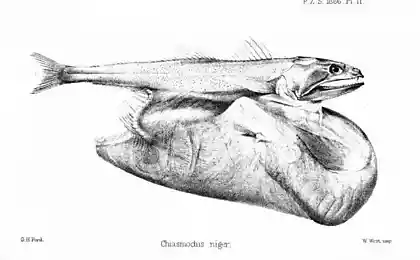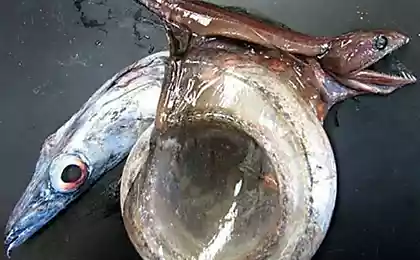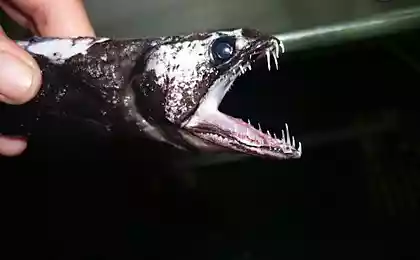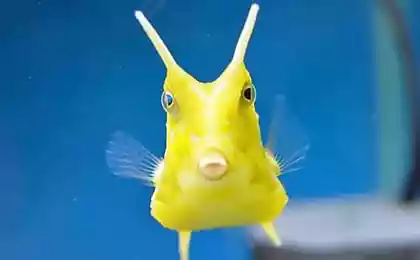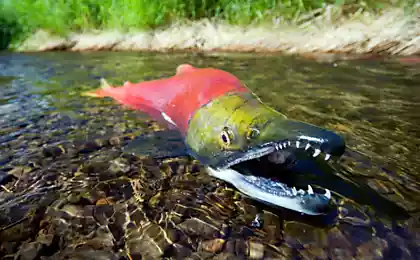3092
Black Crookshanks (10 photos)
Extraordinary voracity boast many predatory fish, most of which are deep-water inhabitants. And this is not due to their greed and brutal appetite, and limited food resources in the deep ocean. Therefore, so if they met on the way any production, it will be eaten by all means, despite its size. One of these voracious fish is Crookshanks.
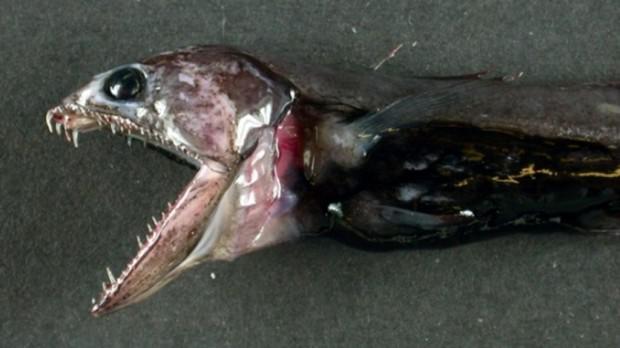
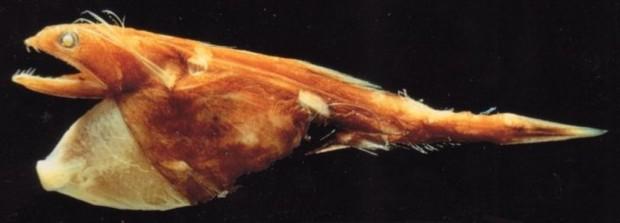
Rhode hiazmodonov has only five species, the best known and most common of which is black Crookshanks. He dwells in the tropical and subtropical waters of all oceans at depths of 700-2700 meters.
Despite its predatory habits and threatening name, length of the fish rarely exceeds 15 inches, some species can be as high as 25 centimeters. For many deep-sea fish is characterized by elongated and laterally compressed body, a small dorsal fin, no scales and underdeveloped muscles. Our hero is no exception. The characteristic features of the structure of his body are elastic bones and huge mouth, strewn with mobile canine teeth.
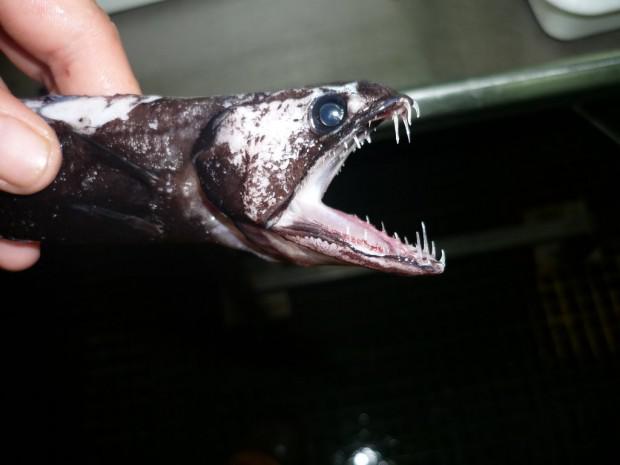
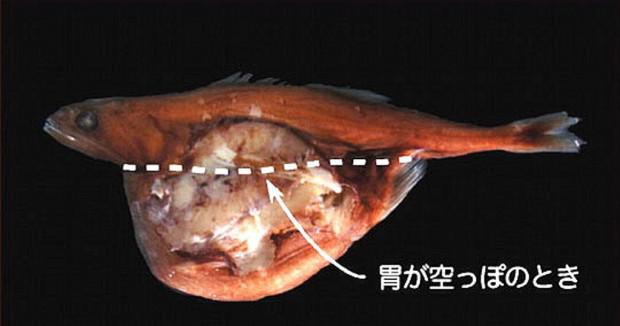
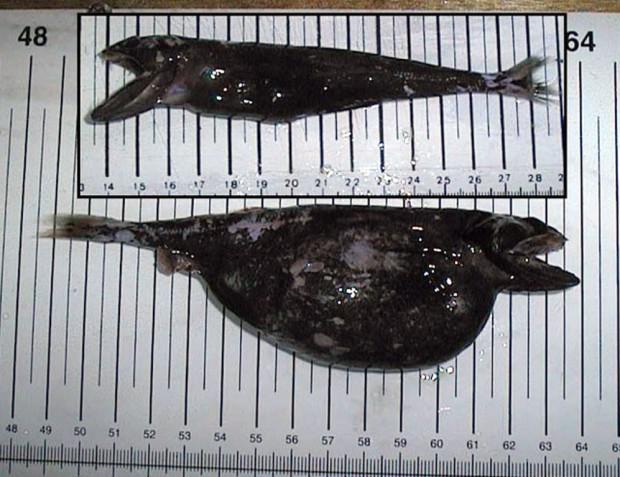
Thanks to its wide open jaws Crookshanks able to swallow prey, exceeding it in size. Stomach and sides of his body may be very stretched, allowing the fish bite larger prey without any problems. There is speculation that Crookshanks enough prey from behind and swallows it, starting from the tail.
To find the next meal in pitch darkness at Crookshanks, like many deep-sea fish, a well-developed system of the lateral line. She picks up low-frequency oscillations of water, allowing the fish to determine the location of potential prey. In addition, as in Idiacanthus atlanticus have Crookshanks on the bottom surface of the body, as well as on the pectoral and pelvic fins are arranged special luminous bodies - photophores.
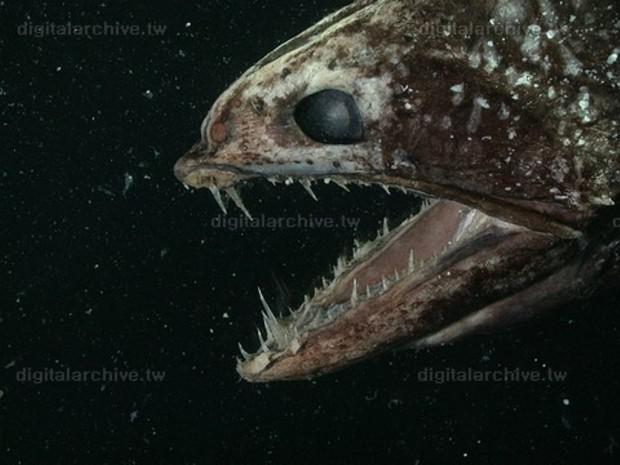
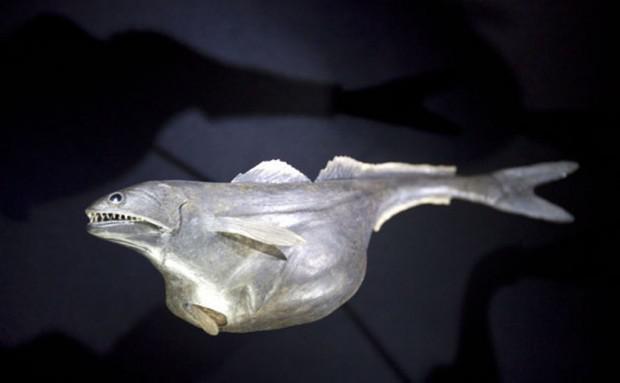

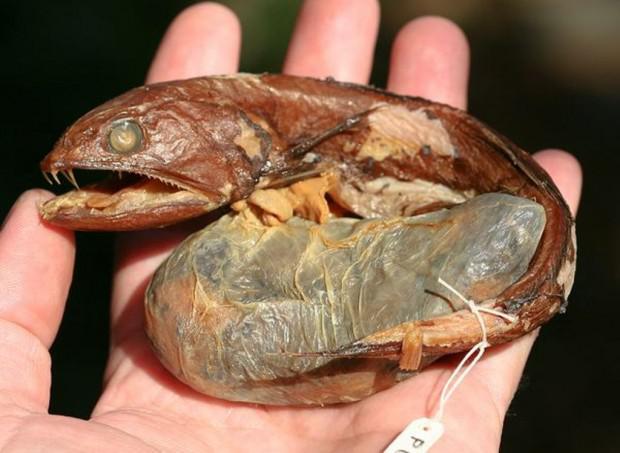

Previously, Crookshanks felt pretty rare inhabitants of the deep sea, but studies conducted in the second half of the 20th century proved the opposite. It turned out that these fish are an important link in the food chain of tuna and marlin. Their large number evidenced by the fact that most of the tuna surveyed in the western Pacific Ocean, were found in the stomachs of Crookshanks.


Rhode hiazmodonov has only five species, the best known and most common of which is black Crookshanks. He dwells in the tropical and subtropical waters of all oceans at depths of 700-2700 meters.
Despite its predatory habits and threatening name, length of the fish rarely exceeds 15 inches, some species can be as high as 25 centimeters. For many deep-sea fish is characterized by elongated and laterally compressed body, a small dorsal fin, no scales and underdeveloped muscles. Our hero is no exception. The characteristic features of the structure of his body are elastic bones and huge mouth, strewn with mobile canine teeth.



Thanks to its wide open jaws Crookshanks able to swallow prey, exceeding it in size. Stomach and sides of his body may be very stretched, allowing the fish bite larger prey without any problems. There is speculation that Crookshanks enough prey from behind and swallows it, starting from the tail.
To find the next meal in pitch darkness at Crookshanks, like many deep-sea fish, a well-developed system of the lateral line. She picks up low-frequency oscillations of water, allowing the fish to determine the location of potential prey. In addition, as in Idiacanthus atlanticus have Crookshanks on the bottom surface of the body, as well as on the pectoral and pelvic fins are arranged special luminous bodies - photophores.





Previously, Crookshanks felt pretty rare inhabitants of the deep sea, but studies conducted in the second half of the 20th century proved the opposite. It turned out that these fish are an important link in the food chain of tuna and marlin. Their large number evidenced by the fact that most of the tuna surveyed in the western Pacific Ocean, were found in the stomachs of Crookshanks.
Bad joke on a friend (3 photos)
Autochrome Lumiere - color photographs of the beginning of XX century (37 photos)
